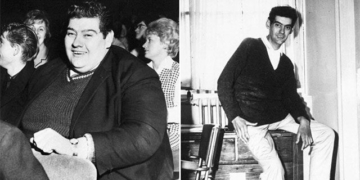The 1920s was a wild and fascinating period in modern American history.
It is interesting to examine these small details of history; at first, we thought this might be some kind of fashion trend, as the 1920s were a “crazy” time for America. However, the wearing of “cowboy boots” actually has a significant historical meaning behind it, all related to the biggest event in America during that time, which was Prohibition.
Prohibition lasted from 1920 to 1933 for several reasons, such as: reducing taxes; decreasing corruption and crime in America; improving citizens’ health; addressing other social issues created by alcohol addiction…
During this period, no company or individual was allowed to produce, import, or sell alcohol in any form. However, people at that time loved alcohol so much that they would go to great lengths to obtain it. The main issue came from the producers of alcohol being banned, and they knew that something had to be done because the demand for alcohol in America was at an all-time high.

The temperance movement began in the early 19th century, as Americans concerned about the adverse effects of alcohol consumption started forming teetotaling communities. By the end of the 19th century, these groups had become a powerful political force, lobbying at the state level and calling for a nationwide ban on alcohol. Some states had already banned the production or sale of alcohol within their borders.
This is why alcohol producers and even other criminal organizations (such as the mafia) began to produce alcohol in remote locations. The government knew that it was only a matter of time before someone started producing and selling alcohol again, which is why they put all police stations across the country on high alert.
Knowing this, those producing illegal alcohol had to be very careful not to leave any traces, even no footprints were allowed to appear near the illegal production sites. This is why many of them started wearing cowboy boots, as wearing these shoes would prevent human footprints from being left and lead the police to think that the remote locations where alcohol was produced were actually inhabited only by animals.

In December 1917, the 18th Amendment, which prohibited “the manufacture, sale, or transportation of intoxicating liquors for beverage purposes”, was passed by Congress and sent to the states for ratification. On January 29, 1919, the 18th Amendment achieved the necessary 3/4 majority of state ratifications. The actual prohibition began in June of that year, but the amendment did not officially take effect until January 29, 1920.
However, by 1922, this tactic—mainly used by the mafia—was revealed to the public by an article in the Evening Independent, detailing the precise use of cowboy boots. It was rumored that this information had been sold to the media by another criminal organization connected to the Chicago mafia involved in illegal alcohol production.
After 1922, alcohol producers during this period had to come up with various other ways, as well as seek out different remote locations to produce and sell alcohol. The most popular places for illegal alcohol trade at that time were private, underground clubs, mainly focused on selling illegal products during the 1920s, such as drugs and alcohol.

On this day in 1933, the 21st Amendment to the United States Constitution was ratified, repealing the 18th Amendment and ending the nationwide Prohibition era in America. At 5:32 PM, Utah became the 36th state to ratify the amendment, achieving the necessary 3/4 majority of state ratifications. Pennsylvania and Ohio ratified earlier that same day.
By the early 1930s, the government had realized that Prohibition had created more problems than it solved, which is why the ban on alcohol ended.
Many places in America had banned the production and sale of alcohol even before Prohibition was enacted. Maine had implemented regulations against drunkenness as early as the 1840s. In 1919, the 18th Amendment extended the ban on the production and sale of alcohol nationwide. While many Americans complained about the prohibition laws and circumvented them by drinking whiskey prescribed by doctors, some others supported it enthusiastically.
Some Protestant groups believed that drinking to excess was sinful, while others were concerned about the social risks of allowing immigrants and the poor to drink. These views persisted even after 1933. Many states maintained their own prohibition laws. Bars in Mississippi did not reopen until the 1960s. By the end of 2006, in South Carolina, each person at a liquor store could only buy one small bottle of alcohol.
Today, the prohibition on the sale of alcohol has been lifted in many states in the U.S. However, about 10% of localities still maintain restrictions on alcohol sales, particularly in southern regions. By the end of last year, six localities in Texas and 35 localities in Arkansas still maintained a ban on alcohol sales. Regulations in many areas of Alaska are quite strict, where even possessing a small amount of alcohol is illegal.


















































